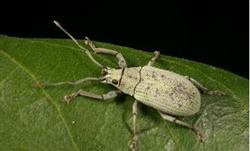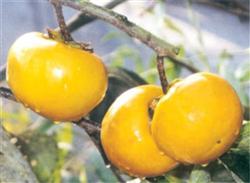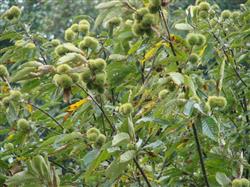Management measures of planting and cultivating Chinese Chestnut in Spring

Spring is the period of flower bud differentiation, spring bud sprouting and flowering of Castanea mollissima. In order to ensure yield and harvest, management should be strengthened. Water it. Spring is the period of concentrated construction of various organs of Castanea mollissima. Metabolism and nutrition are in urgent need of water. Irrigation before sprouting in early spring can promote the formation of female flowers and is beneficial to the growth of branches. Local Chinese chestnut is mostly planted in mountainous and hilly areas, with thin soil layer and poor soil moisture conservation performance, so it is necessary to cover grass to preserve soil moisture. Wipe the buds. When the buds sprout, erase the excessive buds in the middle and lower part of the strong branches, leaving 4-5 large buds and 2-3 buds in the medium branches. Sprouting is carried out according to the principle of removing, leaving, densifying and sparse. Pick the heart. Some branches grow obviously in two years after grafting, which will inhibit the growth of other branches and affect the formation of tree crown. When the new shoot is 20 cm long, remove the tip 1 cm 2 cm; when the secondary and tertiary shoot length 30 cm, remove the tip 7 cm 10 cm. In this way, the young trees can form more fruiting mother branches and increase the number of female flowers. Go male. Without artificial control, the ratio of male flowers to female flowers is usually 20-50 ∶ 1. Too many male flowers will consume a lot of nutrients and reduce the yield. Therefore, it is necessary to remove most of the male inflorescences when they are 2 cm long, leaving only 3-5 inflorescences at the top of the shoot, so that the ratio of male to female flowers is about 5 ∶ 1. In addition, the application of potassium fertilizer was also beneficial to inhibit the overgrowth of male inflorescences. Fertilize. For high yield of Chinese chestnut, in addition to conventional application of nitrogen, phosphorus and potassium fertilizer, emphasis should be placed on boron fertilizer and zinc fertilizer. Master the mixture of 0.2% borax and 0.2% zinc sulfate when the female inflorescence appears, once every 7 days, 2 times in a row.
- Prev

A New Sweet Persimmon Variety "Golden Square Persimmon"
"Golden Square Persimmon" is a new variety of incomplete sweet persimmon, which is bred by using "Xin'an Niuxin persimmon" as female parent and "Zensi Maru" as male parent. The fruit is square with an average weight of 260 g and a maximum weight of 480 g. The face of the fruit is red with 4 symmetrical longitudinal grooves. The pericarp is thin, golden or orange-red.
- Next

Green manure pressing technology of Chinese chestnut in rainy season
Pressing green manure under chestnut trees can improve soil and prevent soil erosion. It has many advantages, such as low investment, low cost, high comprehensive utilization rate and so on. In this paper, the green manure technology of Chinese chestnut in rainy season is introduced as follows: 1. The source of chestnut green manure. First, artificial cultivation of green manure, commonly used Amorpha, mung beans and other leguminous plants; second, wild green manure.
Related
- Moge, come on! The staff of the peasant association in the producing area of cantaloupe were frightened when the crowd gathered.
- Causes and Solutions of low Fruit setting rate of Apple
- Symptoms and control measures of passion fruit virus disease
- Fruit growing lesson: how do apple orchards keep high yields?
- Can you build orchards in the mountains? What are the pros and cons?
- How to manage the coloring period of Crisson grape?
- This paper introduces the processing technology of two kinds of fig products.
- How much is a month for retired teachers in rural areas by 2020?
- How can strawberry planting increase sugar content? We should pay attention to management in many aspects.
- What are the cultivation techniques on how to improve the yield of golden fruit?

